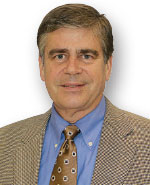How to draw former golfers back with the moment of anticipation
 This past year I bought a 1969 Pontiac Firebird. I didn’t buy it because I had some deep passion, although I did have a ’67 Camaro 327 in high school. I bought it because my youngest son has a 1970 Chevy Nova SS, and this seemed like a hobby I could do with him.¶ My son’s car needs a lot of work, but he and his friends have enjoyed camaraderie through the restoration process and a passion for cars. My Firebird was in mint condition, or at least as close as I was going to get it — my days of crawling under a car to put in a transmission are long gone.
This past year I bought a 1969 Pontiac Firebird. I didn’t buy it because I had some deep passion, although I did have a ’67 Camaro 327 in high school. I bought it because my youngest son has a 1970 Chevy Nova SS, and this seemed like a hobby I could do with him.¶ My son’s car needs a lot of work, but he and his friends have enjoyed camaraderie through the restoration process and a passion for cars. My Firebird was in mint condition, or at least as close as I was going to get it — my days of crawling under a car to put in a transmission are long gone.
My passion for that Firebird, and cars in general, has been rejuvenated. I’m busy like everyone else who works and has family responsibilities. Time is a precious commodity. But I find myself thinking about that Firebird and trying to figure out how to steal some time to go see it.
The funny thing is, I may not drive it or even work on it. I may just walk around the car looking at it or just sit in it. Even when I’m by myself it’s joyful time. Not everyone understands it or “gets it” when it comes to classic muscle cars.
In some ways, golf is like a classic car. You get it or you don’t.
Much like the trip to the garage to see my Firebird, an important aspect of golf is anticipation, and many golf course architects incorporate that feeling into a course’s design. For example, I spoke at the Northwest Turfgrass Association Conference in Coeur d’Alene, Idaho. As part of the conference, attendees had the opportunity of playing the Coeur d’Alene Resort Golf Course. The course is in exceptional condition, largely because of Superintendent Kevin Hicks and his staff.
The signature hole is the 14th, the famous par 3 with a floating green that sits out on the lake. As you walk to the pro shop, you can see the 14th hole. The entire round builds, based on anticipation of playing that hole. There are other examples, like No. 17 at Sawgrass, or No. 13 at Leopard Creek in South Africa. I’m sure you can think of a few examples.
Those holes build anticipation for golfers committed to playing. But how do we provide people, mainly former golfers, with a sense of anticipation that draws them back not just to a hole, but to the game?
One idea comes to mind from my experience with my sons. When my sons first learned to play golf they took group lessons during the summer. Those lessons often were in the morning, with my sons dropped off just prior to the lesson and picked up and taken to another activity or home immediately after.
Why not schedule these lessons during late afternoon so that parents getting off work are the ones to pick them up? I know that when I got a call to pick up my sons at the golf course my anticipation of seeing them grew with every mile I traveled.
When I would arrive we would just hang out, get a quick snack or putt, or maybe hit a few balls or go play a few holes. I realized that with being so busy, you forget how much you miss being around the game, even when you have a job like mine.
Golf and classic muscle cars have a lot in common. As a whole new generation of muscle cars has been developed to generate automotive excitement for young and old, maybe we should focus on building excitement and anticipation in a way to remind the “too busy to play golf” golfers what they’re missing.








